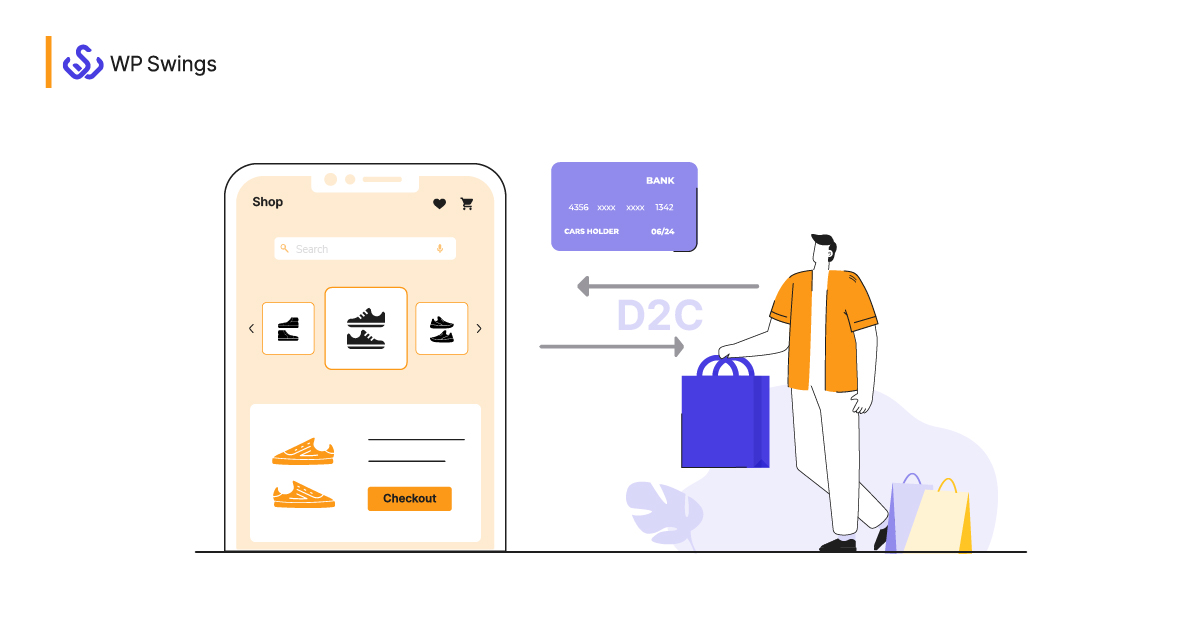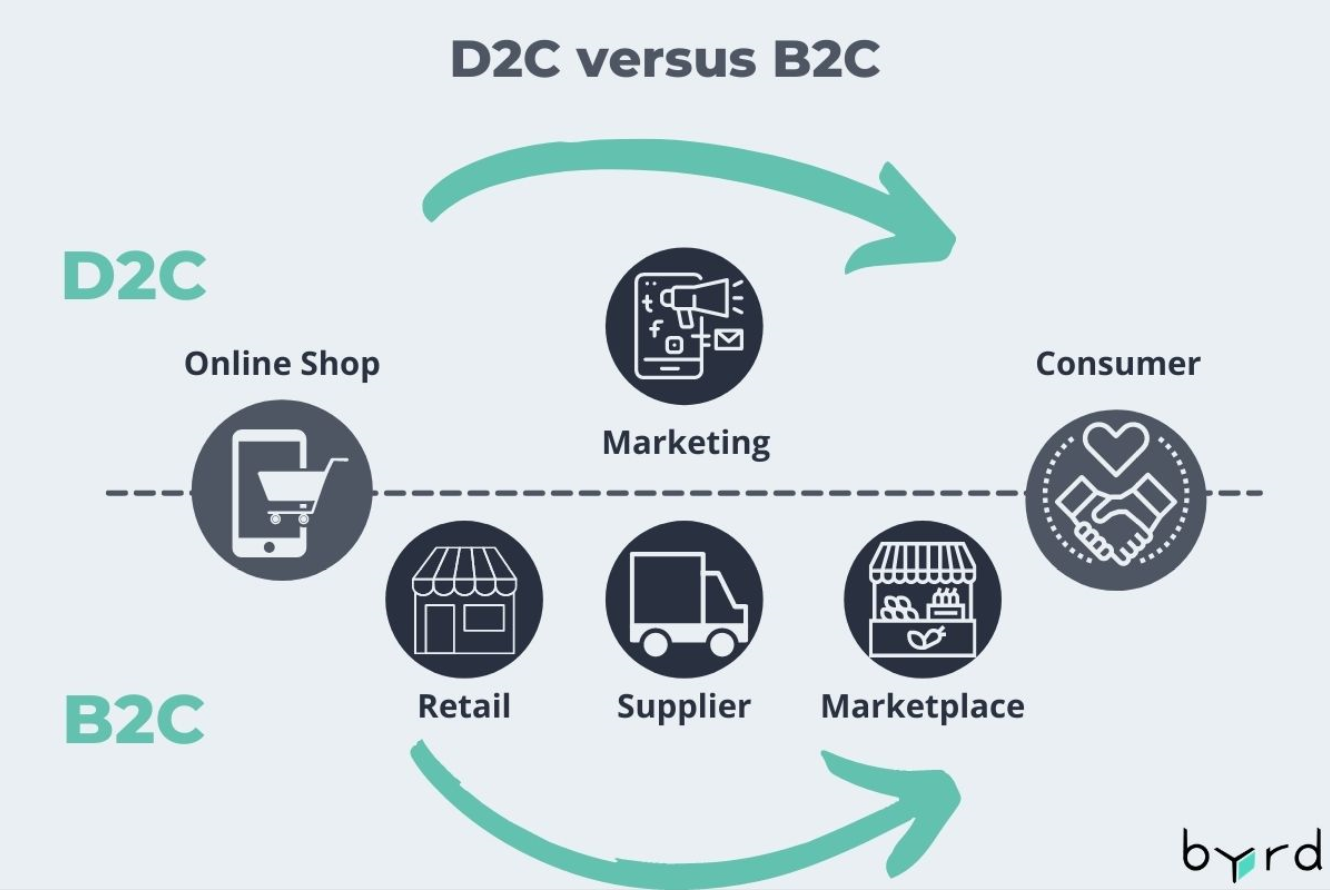Checking out the Potential of D2C Ecommerce: A Comprehensive Overview for Businesses
The D2C ecommerce version presents a considerable shift in exactly how brand names involve with customers. It allows companies to bypass typical retail networks, fostering much deeper connections and possibly enhanced revenue margins. However, this method is not without its complexities. Understanding the nuances of D2C ecommerce is necessary for brand names aiming to grow. What approaches can they adopt to browse this evolving landscape properly? The answers might redefine their organization approaches.
Understanding the D2C Ecommerce Version

Trick Advantages of D2C Ecommerce for Brands
The D2C ecommerce design supplies brand names considerable benefits, especially pertaining to boosted earnings margins. By eliminating intermediaries, business can keep a bigger share of sales income. In addition, this straight connection with customers promotes improved brand commitment, motivating repeat acquisitions and lasting interaction.
Enhanced Revenue Margins

Improved Brand Name Loyalty
Structure on the monetary advantages of D2C ecommerce, enhanced brand loyalty emerges as another vital advantage for companies engaging straight with consumers. By establishing a straight connection, brand names can cultivate much deeper relationships with their clients, gaining understandings into habits and preferences. This direct interaction permits more customized advertising and marketing techniques, which reverberate highly with consumers. Additionally, brands have the possibility to control their messaging and customer experience, reinforcing brand name worths and building trust. When customers feel an individual connection, they are more probable to return, advocate for the brand, and join community interaction. Eventually, boosted brand commitment not just drives repeat acquisitions yet also cultivates an enthusiastic customer base, more solidifying a brand's position on the market.
Challenges Dealt With by D2C Brands
D2C brands run into a number of considerable difficulties that can impact their success. Supply administration problems can cause stock scarcities or excess, complicating operations and customer contentment. Additionally, advertising and marketing spending plan constraints typically limit the ability to successfully involve and get to target market.
Supply Monitoring Issues
Reliable stock management offers a powerful obstacle for several brands running in the direct-to-consumer (D2C) room. These brands typically come to grips with rising and fall demand, which can lead to overstock or stockouts, inevitably affecting customer complete satisfaction and income. In addition, the lack of innovative stock radar can result in disparities between actual stock levels and reported data, making complex order fulfillment. The varied variety of products D2C brand names normally provide likewise complicates supply monitoring, as variants in shades, styles, and sizes require more meticulous oversight. Many D2C companies may battle with limited warehousing capabilities, leading to inefficient usage of area and resources. Reliable stock administration stays a crucial hurdle for D2C brand names aiming for sustainable development and functional performance.
Advertising And Marketing Spending Plan Constraints
Navigating advertising budget plan restrictions is a significant difficulty for several direct-to-consumer (D2C) brand names. Restricted financial sources often limit these business' capacity to buy all-inclusive marketing techniques, resulting in minimized visibility in an affordable market. D2C brand names frequently face the demand to make the most of return on investment (ROI) while targeting particular target markets efficiently. This obstacle is aggravated by climbing expenses in electronic marketing and the necessity to designate funds across numerous networks, consisting of social media, search engines, and e-mail advertising and marketing. As a result, many D2C brand names must innovate cost-effective advertising services, leveraging organic development methods and influencer collaborations. Eventually, efficiently steering these budget plan restraints is essential for maintaining development and attaining long-term productivity in the evolving ecommerce landscape.
Approaches for Building a Successful D2C Ecommerce Service
As consumers progressively look for direct links with brand names, developing an effective D2C ecommerce company needs a critical strategy that prioritizes customer engagement and trust. One effective technique is to develop engaging brand narratives that reverberate with target market, promoting psychological connections. Using social networks platforms can enhance exposure and assist in two-way communication, permitting brand names to involve straight with customers.Moreover, customized experiences with customized advertising efforts can considerably boost customer retention and commitment. Applying loyalty programs and using unique offers can further incentivize repeat purchases.Streamlining the buying procedure is necessary, making sure an user-friendly user interface that enhances the buying experience. Additionally, clear communication pertaining to delivery and returns develops trust and urges consumer confidence.Finally, proactively looking for client feedback and reacting to it shows a dedication to improvement and consumer satisfaction, critical elements in the affordable D2C landscape.
Leveraging Innovation for Enhanced Consumer Experience
In today's affordable D2C ecommerce landscape, technology plays a critical function in shaping customer experiences. Services significantly make use of sophisticated tools such as fabricated intelligence, chatbots, and personalized algorithms to boost interactions and enhance the purchasing process. By incorporating these innovations, brands can offer customized product suggestions based upon specific preferences and buying actions, promoting a much more interesting experience.Moreover, receptive website layouts and mobile applications ensure that consumers can access services perfectly across numerous gadgets. Boosted settlement options, consisting more info of digital wallets and one-click check outs, even more streamline purchases, making it less complicated for consumers to make purchases.Data analytics also allows businesses to gather insights into customer habits, enabling continuous enhancement of services and offerings. Overall, leveraging technology not only boosts client satisfaction but likewise grows loyalty, ultimately driving long-term success in the D2C ecommerce industry.
Advertising Methods to Drive D2C Sales
Exactly how can brand names effectively record the focus of customers in a saturated market? To prosper in the direct-to-consumer (D2C) landscape, brands have to employ targeted advertising tactics. Making use of social media sites systems, brand names can engage customers through interactive material, influencer partnerships, and user-generated blog posts. Customized e-mail projects can additionally promote a sense of link, using tailored promotions based upon customer actions and preferences.Moreover, narration plays an essential role in distinguishing a brand name's narrative, making it remarkable and relatable. Brand names should spend in search engine optimization (SEARCH ENGINE OPTIMIZATION) to improve presence, ensuring their items are conveniently visible online. Furthermore, leveraging information analytics enables organizations to fine-tune their marketing methods and recognize customer patterns better. Eventually, a multi-channel method that integrates imagination with data-driven understandings can significantly increase D2C sales, enabling brand names to stand out in a crowded market.
Future Fads in D2C Ecommerce
With the rapid development of modern technology and consumer choices, the future of D2C ecommerce is positioned for substantial improvement. Emerging trends indicate a shift in the direction of hyper-personalization, where brands leverage data analytics to customize offerings to individual consumer demands. This modification improves client experiences, cultivating commitment and engagement.Moreover, sustainability is ending up being a necessary variable, with customers increasingly favoring brand names that focus on environmentally friendly methods - D2C Ecommerce Agency. Companies are anticipated to embrace transparent supply chains and sustainable materials to fulfill this demand.The assimilation of expert system and enhanced reality will additionally transform the buying experience, enabling consumers to visualize products in their settings prior to purchase. Additionally, social commerce is anticipated to expand, as systems like Instagram and TikTok help with seamless shopping experiences straight within social media.These trends jointly signify a dynamic future for D2C ecommerce, emphasizing customer-centric methods and cutting-edge modern technologies that redefine consumer interactions
Frequently Asked Inquiries
What Industries Benefit Most From D2C Ecommerce?
The present inquiry highlights markets that prosper through direct-to-consumer (D2C) ecommerce. Remarkably, fashion, appeal, electronics, and food sectors utilize D2C models to enhance brand name commitment, enhance customer relationships, and enhance profit margins properly.
Exactly How Do Delivering Costs Impact D2C Rates Techniques?
Shipping expenses significantly affect D2C rates approaches. Services need to stabilize these costs with affordable rates, thinking about client assumptions and earnings margins. Efficient administration of delivery can boost consumer contentment and drive sales in direct-to-consumer models.
What Payment Options Should D2C Services Deal?
D2C businesses should provide varied repayment alternatives, consisting of credit/debit cards, electronic wallets, and buy now, pay later solutions. This selection boosts customer benefit, increases conversion prices, and provides to various customer preferences in the on-line purchasing landscape.
Just How Can D2C Brands Deal With Client Returns Properly?
D2C brand names can deal with client returns effectively by executing user-friendly return plans, offering prepaid delivery labels, and guaranteeing prompt reimbursements (D2C Ecommerce Agency). Clear interaction and structured processes boost customer contentment and motivate repeat company
What Legal Considerations Exist for D2C Ecommerce Workflow?
Lawful considerations for D2C ecommerce operations include compliance with consumer defense legislations, information privacy laws, intellectual building legal rights, and tax needs. Brands have to browse these complexities to avoid legal risks and assure smooth operations. By eliminating intermediaries, D2C brand names can supply competitive rates and foster a much more intimate relationship with their customers.The D2C design is characterized by its reliance on electronic platforms, making it possible for brands to utilize social media, online industries, and their own internet sites to engage with consumers directly. D2C ecommerce facilitates the collection of valuable consumer data, allowing brand names to tailor their offerings and advertising and marketing methods properly, ultimately driving sales and enhancing margins. In addition, brand names have the opportunity to control their messaging and consumer experience, reinforcing brand name worths and building count on. As consumers significantly look for straight links with brands, establishing a successful D2C ecommerce service requires a tactical technique that focuses on client engagement and count on. D2C brand names can take care of consumer returns successfully by carrying out straightforward return policies, providing pre-paid shipping labels, and making sure prompt reimbursements.
Comments on “How a D2C Ecommerce Agency Future-Proofs Your Business Against Retail Disruption”